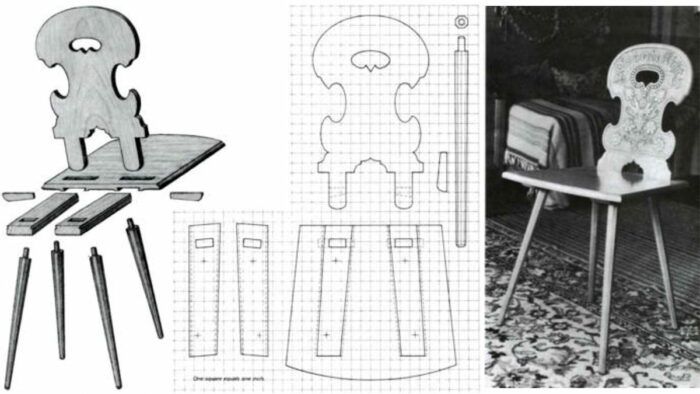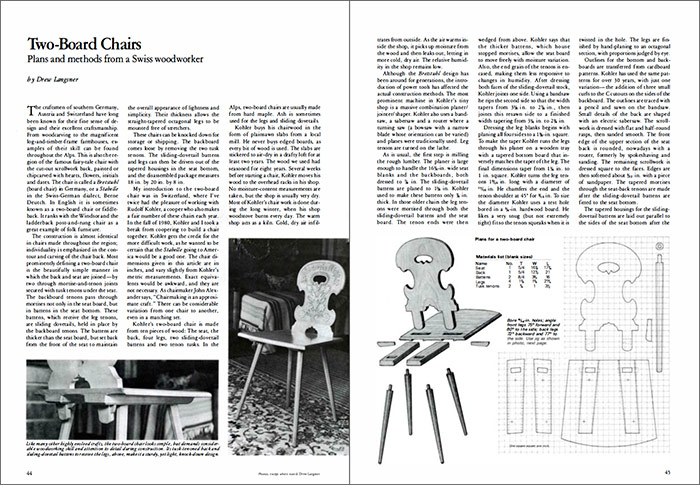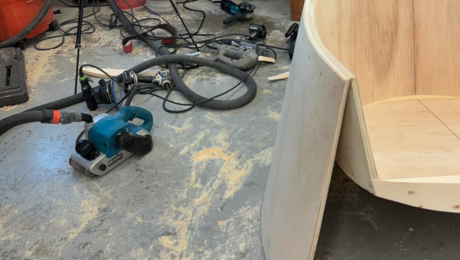
The craftsmen of southern Germany, Austria and Switzerland have long been known for their fine sense of design and their excellent craftsmanship. From woodcarving to the magnificent log-and-timber-frame farmhouses, examples of their skill can be found throughout the Alps. This is also the region of the famous fairy-tale chair with the cut-out scrollwork back, painted or chipcarved with hearts, flowers, initials, and dates. The chair is called a Bretstubl (board chair) in Germany, or a Stabelle in the Swiss-German dialect, Berne Deutch. In English it is sometimes known as a two-board chair or fiddleback. It ranks with the Windsor and the ladderback post-and-rung chair as a great example of folk furniture.
The construction is almost identical in chairs made throughout the region; individuality is emphasized in the contour and carving of the chair back. Most prominently defining a two-board chair is the beautifully simple manner in which the back and seat are joined—by two through mortise-and-tenon joints secured with tusk tenons under the seat. The backboard tenons pass through mortises not only in the seat board, but in battens in the seat bottom. These battens, which receive the leg tenons, are sliding dovetails, held in place by the backboard tenons. The battens are thicker than the seat board, but set back from the front of the seat to maintain the overall appearance of lightness and simplicity. Their thickness allows the straight-tapered octagonal legs to be mounted free of stretchers.
These chairs can be knocked down for storage or shipping. The backboard comes loose by removing the two tusk tenons . The sliding-dovetail battens and legs can then be driven out of the tapered housings in the seat bottom, and the disassembled package measures 18 in. by 20 in. by 8 in.
My introduction to the two-board chair was in Switzerland, where I’ve twice had the pleasure of working with Rudolf Kohler, a cooper who also makes a fair number of these chairs each year. In the fall of 1980, Kohler and I took a break from coopering to build a chair together. Kohler gets the credit for the more difficult work, as he wanted to be certain that the Stabelle going to America would be a good one. The chair dimensions given in this article are in inches, and vary slightly from Kohler’s metric measurements. Exact equivalents would be awkward, and they are not necessary. As chairmaker John Alexander says, “Chairmaking is an approximate craft.” There can be considerable variation from one chair to another, even in a matching set.
 From Fine Woodworking #29
From Fine Woodworking #29
To view the entire article, please click the View PDF button below:





















Log in or create an account to post a comment.
Sign up Log in